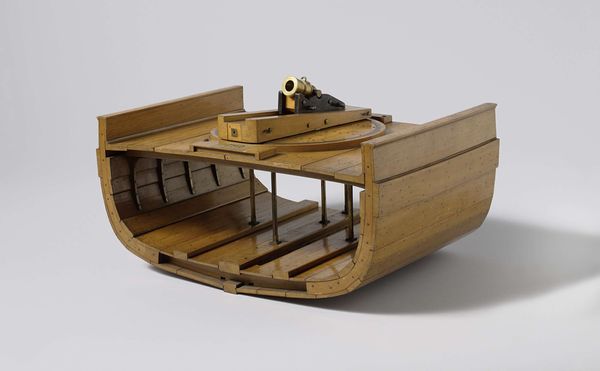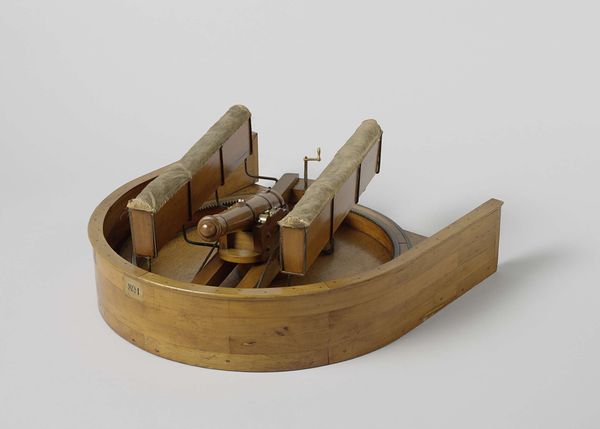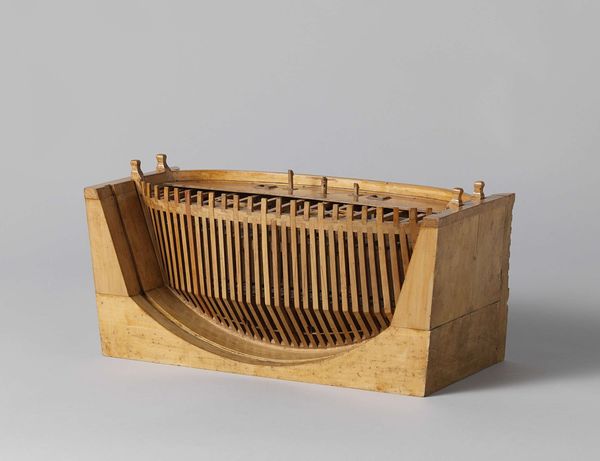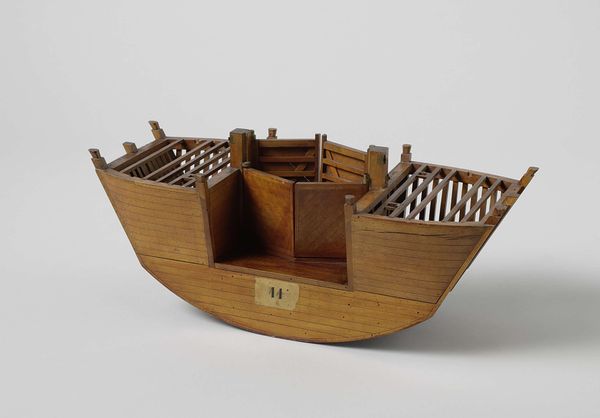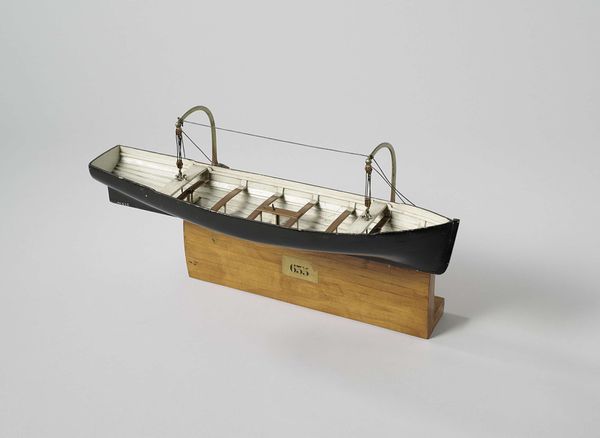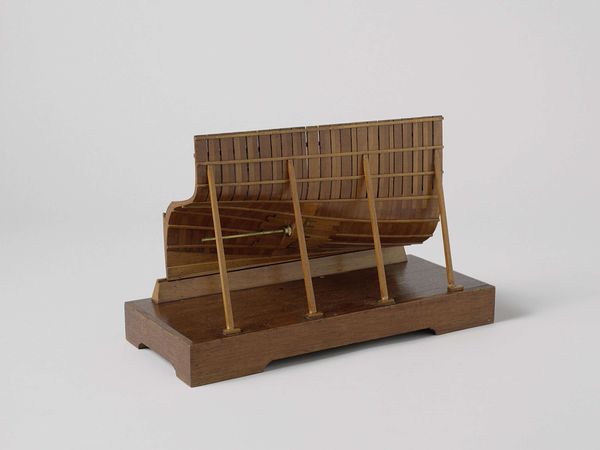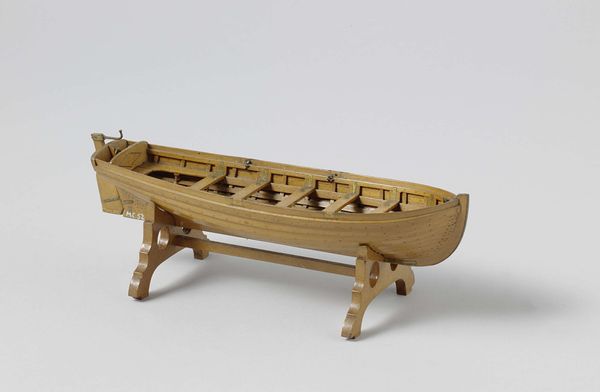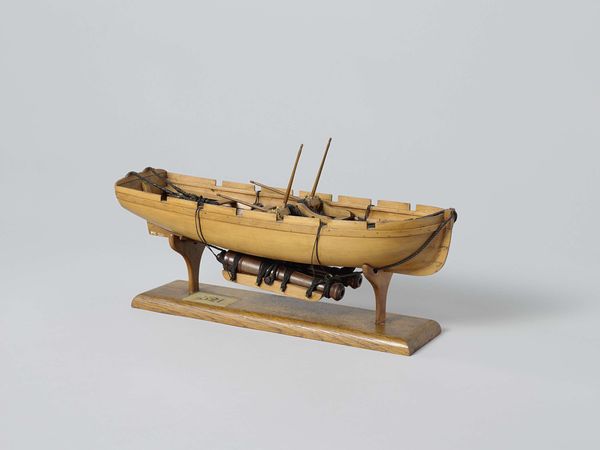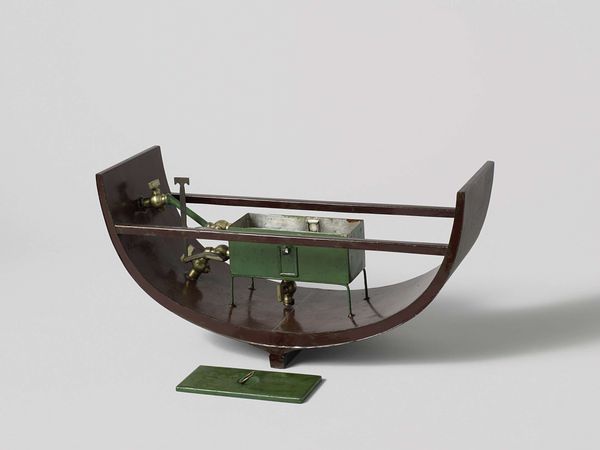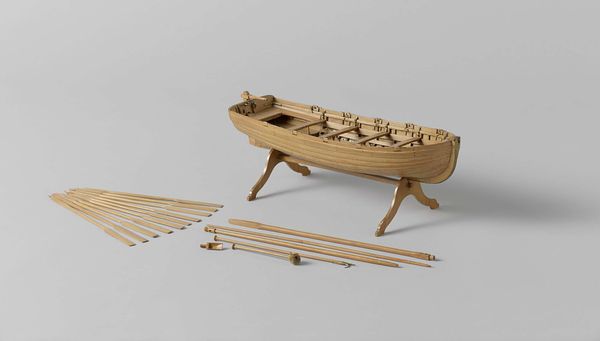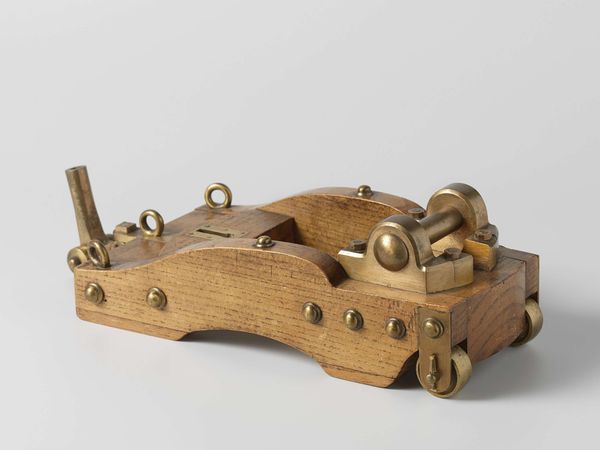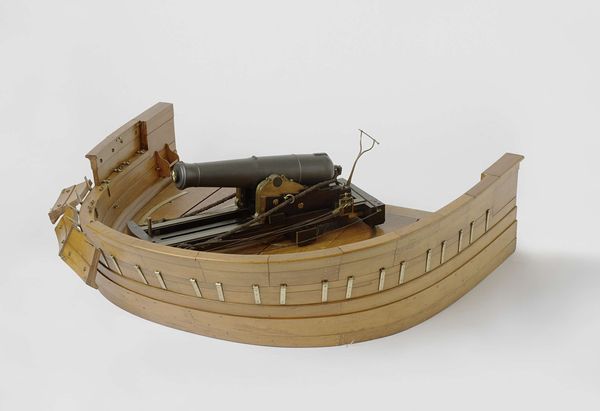
metal, sculpture, wood
#
studio photography
#
product studio photography
#
3d printed part
#
metal
#
appropriation
#
product design photgrpaphy
#
3d shape
#
prop product design
#
sculpture
#
romanticism
#
metallic object render
#
wood
#
product photography
#
cut-out
#
academic-art
#
product render
Dimensions: height 8.3 cm, width 41 cm, depth 38 cm, calibre 4 mm, height 17.5 cm, width 54.3 cm, depth 57.3 cm
Copyright: Rijks Museum: Open Domain
Curator: This is a ‘Model of a Gun Position on the Afterdeck’, created around 1837 by the Rijkswerf Rotterdam. The piece combines wood and metal in its construction. Editor: My first impression is of an almost clinical precision. The miniature cannon, the clean lines of the wooden deck…it feels more like an instrument than a depiction of maritime power. Curator: Indeed. It’s a scaled-down representation of naval technology during a time of significant shifts in shipbuilding and military strategy. These models were often used for instructional purposes, showcasing design innovations to naval officers and shipbuilders. The Rijkswerf Rotterdam, of course, was at the forefront of Dutch naval engineering. Editor: Right. And considering it as a ‘model’ helps contextualize the materials used. Wood and metal are not just materials here; they signify an era of craft, of careful assembly and bespoke labor that's inherent in 19th-century construction. This piece documents specific labour processes and techniques, one in miniature form. Curator: Exactly. Think of the social hierarchy embedded in this object. The artisans at Rijkswerf were highly skilled laborers but ultimately worked within a military-industrial complex. This model subtly reflects those power dynamics, it’s function intended to reinforce naval dominance. Editor: You know, it's striking to me how effectively this tiny cannon captures that sentiment. Its bronze luster contrasts with the light wood of the ship, but it mirrors a lot of those sentiments; both a tool and, maybe ironically in this format, also a piece intended to awe people. I wonder if the workers making it felt complicit in the power it implied. Curator: It prompts questions, doesn't it? Consider its relationship to Dutch nationalism and colonial expansion. How does an object like this legitimize those projects, even in miniature form? Editor: Ultimately, I’m still struck by this tangible reminder of human skill, both in its creation and its intended operation. Its miniature reality makes visible production as a feat itself. Curator: It offers insight into the mindset of an era dominated by technological advancement and its complex entanglement with power. Editor: And it leaves us contemplating the individuals that were its foundation.
Comments
No comments
Be the first to comment and join the conversation on the ultimate creative platform.
